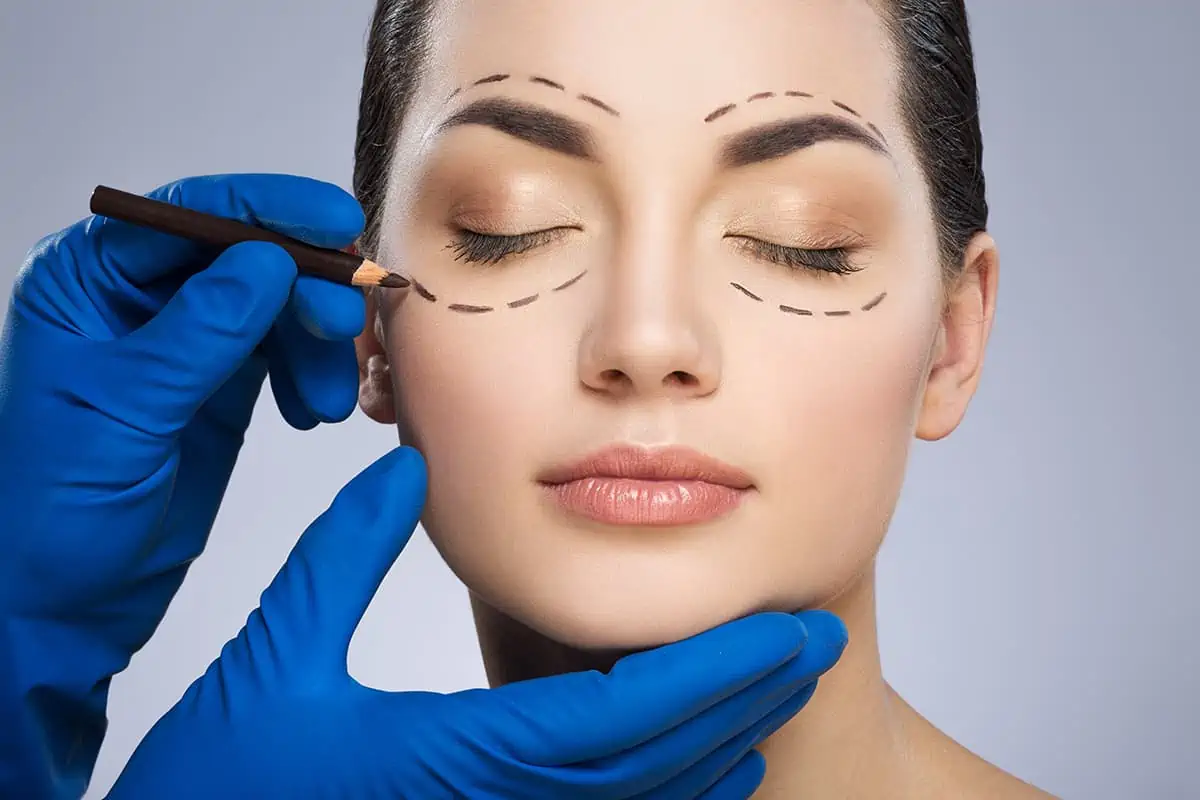Ever feel like your reflection doesn’t truly represent who you are inside? For many transgender women and gender non-conforming individuals, the prominence of an Adam’s apple can be a source of distress, acting as a constant reminder of a gender identity they don’t connect with. This cartilaginous protrusion, while a natural part of the human body, can be a significant source of gender dysphoria, impacting self-esteem and social interactions.
Fortunately, advancements in surgical techniques have made it possible to achieve a more harmonious appearance through Adam’s apple reduction surgery, also known as chondrolaryngoplasty. This procedure can significantly reduce the prominence of the Adam’s apple, leading to a more feminine neck contour and alleviating feelings of dysphoria. However, like any surgery, it’s crucial to understand the implications, particularly regarding adam’s apple removal scar formation. This comprehensive guide will equip you with the knowledge to make informed decisions about this transformative procedure.

Table of Contents
Understanding the Procedure and Adam’s Apple Removal Scarring Basics
Before delving into the specifics of adam’s apple removal scar variations, it’s essential to understand the procedure itself and the fundamental reasons why scarring occurs.
The Science Behind Chondrolaryngoplasty
Chondrolaryngoplasty involves reshaping the thyroid cartilage, the structure that forms the Adam’s apple. During the procedure, a qualified surgeon will make an incision, either externally or endoscopically, to access the cartilage. The excess cartilage is then carefully shaved down or reshaped to achieve a smoother, less prominent contour.
Why Scarring is Inevitable
Scarring is a natural part of the body’s healing process after any incision or injury. When the skin is cut, the body works to repair the wound by producing collagen, a fibrous protein that acts like a scaffold to close the gap. This collagen deposit forms the scar tissue, which, while stronger than regular skin, may differ in texture and appearance.
Several factors can influence adam’s apple removal scar formation:
- Genetics: Some individuals are genetically predisposed to developing more noticeable scars.
- Skin type: Darker skin tones tend to produce more pigment, potentially leading to hyperpigmentation and more prominent scars.
- Surgical Technique: The chosen surgical approach and incision location play a significant role in scar appearance.
- Post-Operative Care: Diligently following post-surgery care instructions is crucial for optimizing healing and minimizing scarring.
Scarring Considerations: Navigating Different Surgical Approaches, and Therefore, Different Adam’s Apple Removal Scar Considerations
When it comes to adam’s apple removal scar outcomes, the surgical approach plays a pivotal role. Let’s explore the two primary techniques and their respective implications on scarring:
Option 1: The Open Technique
In the traditional open technique, the surgeon makes a small incision directly over the Adam’s apple, providing direct access to the thyroid cartilage.
Scar Characteristics:
- Length: Typically around 1-2 inches long.
- Visibility: Can be visible depending on factors like skin tone and healing.
- Potential Complications: While generally safe, there’s a slightly higher risk of infection or wound healing complications with any open procedure.
Pros:
- Provides excellent visibility and access to the cartilage, potentially allowing for more significant reduction.
- May be suitable for individuals with thicker cartilage.
Cons:
- Results in a visible scar on the neck.
Option 2: The Endoscopic Technique – Minimizing Adam’s Apple Removal Scar Visibility
As medical technology has advanced, so too have the options for minimizing adam’s apple removal scar appearance. The endoscopic technique represents a minimally invasive approach. Using an endoscope, a thin, flexible tube with a camera and surgical instruments attached, the surgeon operates through tiny incisions made discreetly under the chin or inside the mouth.
Scar Characteristics:
- Length: Significantly smaller incisions compared to the open technique.
- Visibility: Scars are generally well-hidden within natural creases or inside the mouth, making them less noticeable.
- Potential Complications: Generally considered safe, but as with any surgery, there are inherent risks.
Pros:
- Minimally invasive, leading to less scarring.
- Often associated with faster healing times and reduced post-operative discomfort.
Cons:
- May not be suitable for all individuals, depending on the anatomy and the degree of cartilage reduction required.
Direct Comparison of Techniques and Their Resulting Adam’s Apple Removal Scars
To further clarify the distinctions between these approaches, consider the following table:
| Feature | Open Technique | Endoscopic Technique |
| Incision Location | Directly on the neck | Under the chin or inside the mouth |
| Scar Visibility | More visible | Less visible, often hidden in natural creases |
| Scar Length | Longer (1-2 inches) | Shorter, less than an inch |
| Recovery Time | May be slightly longer | Often shorter |
| Cost | May be more affordable in some cases | Can be slightly more expensive in some cases |
Ultimately, the choice between these techniques, and therefore the expected adam’s apple removal scar outcome, depends on individual needs, preferences, and the surgeon’s recommendations. A thorough consultation with a qualified and experienced surgeon is essential to determine the most appropriate approach.
Minimizing Adam’s Apple Removal Scarring: A Proactive Approach
While some degree of scarring is an inevitable part of the healing process, taking a proactive approach, both before and after surgery, can significantly influence adam’s apple removal scar appearance over time.
Pre-Surgery Preparation for Optimal Healing
- Lifestyle Modifications:
- Smoking Cessation: Smoking significantly impairs wound healing and increases the risk of complications. It’s crucial to quit smoking well in advance of surgery.
- Healthy Diet: A balanced diet rich in fruits, vegetables, and protein provides the body with essential nutrients for optimal healing.
- Hydration: Staying well-hydrated is crucial for cell regeneration and overall healing.
- Medical Consultation: Be open and honest with your surgeon about any pre-existing medical conditions, allergies, or medications you’re taking, as these can impact healing.
Post-Operative Care: Your Roadmap to Minimizing Adam’s Apple Removal Scars
The weeks following surgery are critical for adam’s apple removal scar management. Diligently following your surgeon’s post-operative care instructions is paramount. This typically includes:
- Wound Care: Keeping the incision site clean and dry is essential for preventing infection. Your surgeon will provide specific instructions on how to clean the wound and when to change dressings.
- Scar Massage: Once the incision has fully healed, gentle scar massage can help break down scar tissue and improve blood flow to the area, promoting healing and minimizing scar visibility.
- Sun Protection: Protecting the healing skin from harmful UV rays is crucial. Use sunscreen with a high SPF (30 or higher) and avoid direct sun exposure as much as possible, especially during peak hours.
Advanced Scar Management: Exploring Further Options
For some individuals, additional scar management techniques may be beneficial in further minimizing adam’s apple removal scar appearance:
- Silicone Sheets or Gel: Silicone products create a barrier that helps regulate moisture and collagen production, leading to flatter and less noticeable scars.
- Steroid Injections: In some cases, corticosteroid injections may be used to reduce inflammation and soften scar tissue, particularly for raised or hypertrophic scars.
- Laser Therapy: Laser treatments can target different aspects of scarring, such as redness, texture, and pigmentation irregularities.
It’s important to note that these options may not be suitable for everyone, and it’s essential to consult with a qualified dermatologist or plastic surgeon to discuss the best course of action based on your individual needs and scar characteristics.
Choosing the Right Adam’s Apple Removal Scar Management Plan: Your Journey, Your Choice
While the information presented here provides a comprehensive overview of adam’s apple removal scar considerations, remember that every individual is unique. The best approach is one tailored to your specific anatomy, desired outcomes, and personal preferences.
Open and honest communication with a qualified and experienced surgeon is paramount. During your consultation, don’t hesitate to ask questions, voice your concerns, and discuss the potential risks and benefits of each surgical technique and scar management option.
By approaching this journey with knowledge, self-awareness, and the support of qualified professionals, you can make informed decisions that align with your transition goals and lead to a more authentic and confident you.
Visit Dr.MFO Instagram profile to see real patient transformations! Get a glimpse of the incredible results achieved through facial feminization surgery and other procedures. The profile showcases before-and-after photos that highlight Dr. MFO’s expertise and artistic vision in creating natural-looking, beautiful outcomes.
Ready to take the next step in your journey? Schedule a free consultation with Dr. MFO today. During the consultation, you can discuss your goals, ask any questions you may have, and learn more about how Dr. MFO can help you achieve your desired look. Don’t hesitate to take advantage of this free opportunity to explore your options and see if Dr. MFO is the right fit for you.




